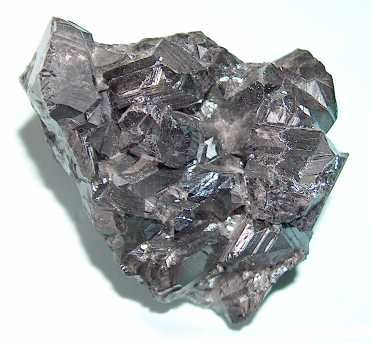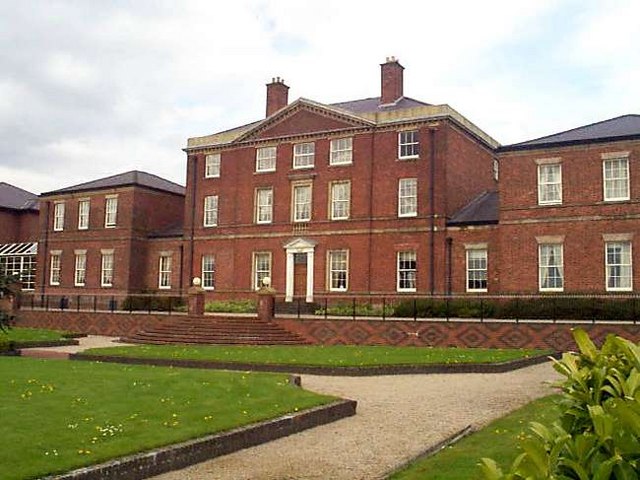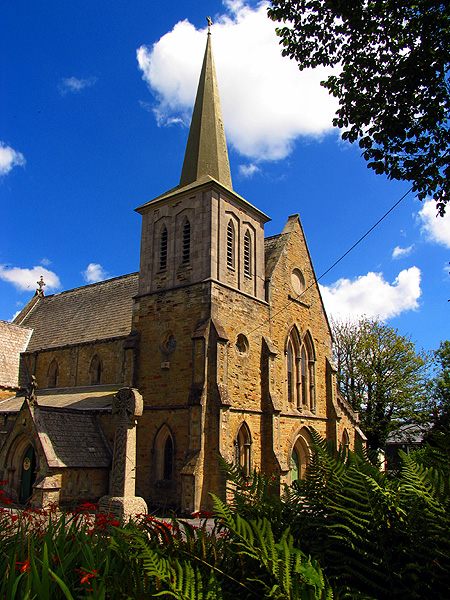|
Polgooth, Cornwall
Polgooth ( kw, Pollgoodh) is a former mining village in south Cornwall, England, United Kingdom. It lies mainly in the parish of St Mewan and partly in the parish of St Ewe. The nearest town is St Austell two miles (3.5 km) to the north-east. "The greatest tin mine in the world" Antiquarians once claimed that the mines of Polgooth had supplied Phoenician traders with tin 3000 years ago, but in fact the earliest historical record is a list compiled in 1593, in which several well-established Polgooth workings were named. At that time and subsequently, the mines were owned by the Edgcumbe family. By the eighteenth century, Polgooth was celebrated as the "greatest tin mine in the world" and the richest mine in the United Kingdom. To pump water from the workings an early 50-inch Newcomen steam engine was erected in 1727 by Joseph Hornblower, superseded in 1784 by a 58-inch Boulton & Watt steam engine and in 1823 (when John Taylor was manager) by an 80-inch William Sims engine ... [...More Info...] [...Related Items...] OR: [Wikipedia] [Google] [Baidu] |
St Mewan
St Mewan ( kw, Sen Mewen) is a civil parishes in England, civil parish and village in south Cornwall, England, United Kingdom. The village is approximately one mile (1.6 km) west of St Austell. It is a small settlement, comprising the parish church, rectory, a school and nearby farms. St Mewan parish includes the villages of Sticker, Cornwall, Sticker, Trelowth, Trewoon, and most of Polgooth. An electoral ward with the name ''St Mewan'' also exists. The population at the 2011 census was 3,402. Parish church The church is dedicated to Saint Méen, Mewan, a sixth-century Celtic saint who was born in Wales, visited Cornwall, and is mostly venerated in Brittany. The current building dates from the 13th century and is mentioned in a bishops' inquisition of 1294 as the 'Ecclesia de St Mewany'. It was, however, substantially rebuilt in 1854 by George Edmund Street and enlarged in 1890. The church tower is of only two stages and is built of granite blocks. Local legend suggests th ... [...More Info...] [...Related Items...] OR: [Wikipedia] [Google] [Baidu] |
James Watt
James Watt (; 30 January 1736 (19 January 1736 Old Style and New Style dates, OS) – 25 August 1819) was a Scottish people, Scottish invention, inventor, mechanical engineer, and chemist who improved on Thomas Newcomen's 1712 Newcomen steam engine with his Watt steam engine in 1776, which was fundamental to the changes brought by the Industrial Revolution in both his native Great Britain and the rest of the world. While working as an instrument maker at the University of Glasgow, Watt became interested in the technology of steam engines. He realised that contemporary engine designs wasted a great deal of energy by repeatedly cooling and reheating the cylinder (engine), cylinder. Watt introduced a design enhancement, the Watt steam engine#Separate condenser, separate condenser, which avoided this waste of energy and radically improved the power, efficiency, and cost-effectiveness of steam engines. Eventually, he rotative beam engine, adapted his engine to produce rotary motio ... [...More Info...] [...Related Items...] OR: [Wikipedia] [Google] [Baidu] |
Truro
Truro (; kw, Truru) is a cathedral city and civil parish in Cornwall, England. It is Cornwall's county town, sole city and centre for administration, leisure and retail trading. Its population was 18,766 in the 2011 census. People of Truro can be called Truronians. It grew as a trade centre through its port and as a stannary town for tin mining. It became mainland Britain's southernmost city in 1876, with the founding of the Diocese of Truro. Sights include the Royal Cornwall Museum, Truro Cathedral (completed 1910), the Hall for Cornwall and Cornwall's Courts of Justice. Toponymy Truro's name may derive from the Cornish ''tri-veru'' meaning "three rivers", but authorities such as the ''Oxford Dictionary of English Place Names'' have doubts about the "tru" meaning "three". An expert on Cornish place-names, Oliver Padel, in ''A Popular Dictionary of Cornish Place-names'', called the "three rivers" meaning "possible". Alternatively the name may come from '' tre-uro'' or s ... [...More Info...] [...Related Items...] OR: [Wikipedia] [Google] [Baidu] |
Zinc
Zinc is a chemical element with the symbol Zn and atomic number 30. Zinc is a slightly brittle metal at room temperature and has a shiny-greyish appearance when oxidation is removed. It is the first element in group 12 (IIB) of the periodic table. In some respects, zinc is chemically similar to magnesium: both elements exhibit only one normal oxidation state (+2), and the Zn2+ and Mg2+ ions are of similar size.The elements are from different metal groups. See periodic table. Zinc is the 24th most abundant element in Earth's crust and has five stable isotopes. The most common zinc ore is sphalerite (zinc blende), a zinc sulfide mineral. The largest workable lodes are in Australia, Asia, and the United States. Zinc is refined by froth flotation of the ore, roasting, and final extraction using electricity ( electrowinning). Zinc is an essential trace element for humans, animals, plants and for microorganisms and is necessary for prenatal and postnatal development. It ... [...More Info...] [...Related Items...] OR: [Wikipedia] [Google] [Baidu] |
Arsenic
Arsenic is a chemical element with the symbol As and atomic number 33. Arsenic occurs in many minerals, usually in combination with sulfur and metals, but also as a pure elemental crystal. Arsenic is a metalloid. It has various allotropes, but only the gray form, which has a metallic appearance, is important to industry. The primary use of arsenic is in alloys of lead (for example, in car batteries and ammunition). Arsenic is a common n-type dopant in semiconductor electronic devices. It is also a component of the III-V compound semiconductor gallium arsenide. Arsenic and its compounds, especially the trioxide, are used in the production of pesticides, treated wood products, herbicides, and insecticides. These applications are declining with the increasing recognition of the toxicity of arsenic and its compounds. A few species of bacteria are able to use arsenic compounds as respiratory metabolites. Trace quantities of arsenic are an essential dietary element in rats, ... [...More Info...] [...Related Items...] OR: [Wikipedia] [Google] [Baidu] |
Tungsten
Tungsten, or wolfram, is a chemical element with the symbol W and atomic number 74. Tungsten is a rare metal found naturally on Earth almost exclusively as compounds with other elements. It was identified as a new element in 1781 and first isolated as a metal in 1783. Its important ores include scheelite and wolframite, the latter lending the element its alternate name. The free element is remarkable for its robustness, especially the fact that it has the highest melting point of all known elements barring carbon (which sublimes at normal pressure), melting at . It also has the highest boiling point, at . Its density is , comparable with that of uranium and gold, and much higher (about 1.7 times) than that of lead. Polycrystalline tungsten is an intrinsically brittle and hard material (under standard conditions, when uncombined), making it difficult to work. However, pure single-crystalline tungsten is more ductile and can be cut with a hard-steel hacksaw. Tungsten o ... [...More Info...] [...Related Items...] OR: [Wikipedia] [Google] [Baidu] |
Old Mine Engine House - Geograph
Old or OLD may refer to: Places *Old, Baranya, Hungary *Old, Northamptonshire, England *Old Street station, a railway and tube station in London (station code OLD) *OLD, IATA code for Old Town Municipal Airport and Seaplane Base, Old Town, Maine, United States People *Old (surname) Music *OLD (band), a grindcore/industrial metal group * ''Old'' (Danny Brown album), a 2013 album by Danny Brown * ''Old'' (Starflyer 59 album), a 2003 album by Starflyer 59 * "Old" (song), a 1995 song by Machine Head *''Old LP'', a 2019 album by That Dog Other uses * ''Old'' (film), a 2021 American thriller film *''Oxford Latin Dictionary'' *Online dating *Over-Locknut Distance (or Dimension), a measurement of a bicycle wheel and frame *Old age See also *List of people known as the Old * * *Olde, a list of people with the surname *Olds (other) Olds may refer to: People * The olds, a jocular and irreverent online nickname for older adults * Bert Olds (1891–1953), Australian rules ... [...More Info...] [...Related Items...] OR: [Wikipedia] [Google] [Baidu] |
Eliza Meteyard
Eliza Meteyard (1816–1879) was an English writer. She was known for journalism, essays, novels, and biographies, particularly as an authority on Wedgwood pottery and its creator. She did living writing for periodicals. Life The daughter of William Meteyard, a surgeon, and his wife Mary, daughter of Zebedee Beckham of Great Yarmouth, she was born on 21 June 1816, in Lime Street, Liverpool. In 1818 her father became surgeon to the Shropshire militia; she went to Shrewsbury, and in 1829 moved to Thorpe, near Norwich, which was her formative place as she came of age. She left Norwich in 1842, at age 25, and settled in London. She brought forward proposals for female education, and was active in the Whittington Club, "a Bohemian experiment in middle class social reform", a social and debating club that uniquely gave full membership to lower-middle-class women of learning. Meteyard died on 4 April 1879 at Stanley Terrace, Fentiman Road, South Lambeth. For a number of years she ha ... [...More Info...] [...Related Items...] OR: [Wikipedia] [Google] [Baidu] |
John Wedgwood (1766–1844)
John Wedgwood (baptised 2 April 1766 – 26 January 1844), the eldest son of the potter Josiah Wedgwood, was a partner in the Wedgwood pottery firm 1790–1793 and again 1800–1812. Life Wedgwood was educated at Warrington Academy and the University of Edinburgh. Wedgwood had an interest in botany Botany, also called plant science (or plant sciences), plant biology or phytology, is the science of plant life and a branch of biology. A botanist, plant scientist or phytologist is a scientist who specialises in this field. The term "bot ... and horticulture, particularly the cultivation of tropical fruit and other exotic plants. He was a founder of the Royal Horticultural Society having suggested the idea in a letter to William Forsyth (horticulturist), William Forsyth, head gardener to King George III, written 29 June 1801 and chairing the first meeting of the society on 7 March 1804. He lived in Abergavenny, Wales, and at Kingscote, Gloucestershire. He was a partner in t ... [...More Info...] [...Related Items...] OR: [Wikipedia] [Google] [Baidu] |
Josiah Wedgwood
Josiah Wedgwood (12 July 1730 – 3 January 1795) was an English potter, entrepreneur and abolitionist. Founding the Wedgwood company in 1759, he developed improved pottery bodies by systematic experimentation, and was the leader in the industrialisation of the manufacture of European pottery. The renewed classical enthusiasms of the late 1760s and early 1770s were of major importance to his sales promotion. His expensive goods were in much demand from the upper classes, while he used emulation effects to market cheaper sets to the rest of society. Every new invention that Wedgwood produced – green glaze, creamware, black basalt, and jasperware – was quickly copied. Having once achieved efficiency in production, he obtained efficiencies in sales and distribution. His showrooms in London gave the public the chance to see his complete range of tableware. Wedgwood's company never made porcelain during his lifetime, but specialised in fine earthenwares and stonewares that h ... [...More Info...] [...Related Items...] OR: [Wikipedia] [Google] [Baidu] |
Henry Arundell, 8th Baron Arundell Of Wardour
Henry Arundell, 8th Baron Arundell of Wardour (31 March 1740 – 4 December 1808) was a British nobleman in the 18th century. He married Mary Christina Conquest, in 1763. Biography Henry Arundell was born on 31 March 1740, to Henry Arundell and Mary Bellings-Arundell. He married Mary Christina Conquest, the daughter of Benedict Conquest of Irnham Hall and Mary Ursula Markham, on 31 May 1763. They had a London home in Grosvenor Square. They had two daughters: Mary Christina (1764–1805), who married James Everard Arundell, 9th Baron Arundell of Wardour, and Eleanor Mary (1766–1835), who married Charles Clifford, 6th Baron Clifford of Chudleigh. An avid collector of art, he accumulated immense debts in building and furnishing New Wardour Castle, Wiltshire, designed in the Palladian style by Giacomo Quarenghi. A portrait was painted of him by Sir Joshua Reynolds. He died on 4 December 1808, aged 68. After his death, his trustees were forced to sell off a portion of his lan ... [...More Info...] [...Related Items...] OR: [Wikipedia] [Google] [Baidu] |
Charlestown, Cornwall
Charlestown ( kw, Porth Meur, meaning ''great cove'') is a village and port on the south coast of Cornwall, United Kingdom, and in the civil parish of St Austell Bay. It is situated approximately south east of St Austell town centre. The port at Charlestown developed in the late 18th century from the fishing village of West Polmear. Whereas other areas of St Austell have seen much development during the 20th century, Charlestown has remained relatively unchanged. History Charlestown grew out of the small fishing village of West Polmear (or West Porthmear), which consisted of a few cottages and three cellars, in which the catch of pilchards were processed. The population amounted to nine fishermen and their families in 1790. Before the harbour was built, trading vessels landed and loaded on the beach. Charles Rashleigh, who moved to Duporth Manor, just outside the village, used plans prepared by John Smeaton to begin the construction of a harbour and dock in 1791. After b ... [...More Info...] [...Related Items...] OR: [Wikipedia] [Google] [Baidu] |








